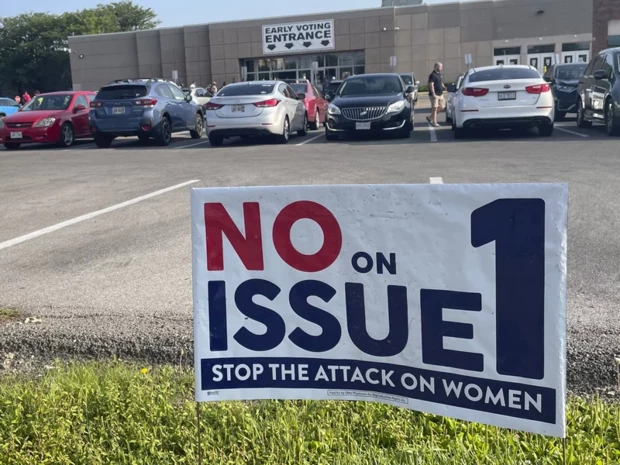When Voters Remember

Voters tend to have very short memories.
The most memorable example of this tendency was Winston Churchill’s defeat in the waning days of World War II. Churchill had successfully led the British people through the greatest threat in their long history and had emerged victorious. But only weeks after Germany’s surrender and two full months before the war’s conclusion, Churchill was given what he later called “the order of the boot” when his government lost its majority in parliamentary elections.
Americans are no less impatient. More recently, voters on this side of the pond removed George H.W. Bush from office in the months after the first Gulf War had concluded. Bush’s approval ratings had skyrocketed to over 90 percent as he successfully constructed the global coalition that overpowered Saddam Hussein after the Iraqi dictator invaded Kuwait. Two years later, Bush was the victim of widespread perception that he was too focused on international matters at the expense of the U.S. economy, and he was replaced by Bill Clinton.
Our attention spans have shrunk even further in the digital and social media eras. Polls show that most Americans are unaware of Joe Biden’s most notable legislative accomplishments, and even Donald Trump’s dominance of the media landscape does not protect him from the same voter amnesia. So after the Supreme Court overturned Roe v. Wade last June and after the decision protected Democrats from their expected midterm election wipeout last fall, it was an open question whether the voters' strong opposition to the Court’s decision would still be relevant to their decisions in 2024.
But after Ohio voters overwhelmingly defeated a ballot measure last week that would have made it easier for the state to make abortion illegal there, it’s becoming clear that questions of reproductive rights will remain at the center of the political debate not only through next year’s elections but likely for a long time into the future. The ballot initiative would have raised the threshold for passing constitutional amendments in the state from a simple majority to a 60 percent threshold, which would have made it much more difficult for pro-choice Ohioans to pass another measure later this fall that would institute abortion protections in the state constitution.
Not only was the initiative defeated by a wide margin, making it much more likely that the abortion measure will pass this fall, but voter turnout was at historically high levels despite the election taking place in August of an odd-numbered year. Ohio’s emphatic vote was the latest in a series of elections that have taken place around the country since last year’s Court decision, which have made it clear that Americans are motivated on the abortion issue in a singular manner.
Ohio is the seventh state to vote on an abortion-related question since then, and while left-leaning electorates in California and Vermont unsurprisingly voted for abortion protection measures, so did voters in conservative states such as Kansas, Kentucky and Montana as well as the key battleground of Michigan. And Ohio has moved from being the nation’s most heavily fought swing state to being reliably Republican, largely on the strength of rural and exurban socially conservative voters.
But the Court’s overturn of Roe seems to have reversed the enduring motivational advantage that the pro-life movement has long enjoyed. Supporters of abortion rights, especially women, young people, and voters from minority communities, have turned out heavily in these special elections. These are voters who Biden desperately needs to cast ballots in large numbers next year, and who have been notably uninspired by the president’s time in office. In 2020, their lack of enthusiasm for Biden was superseded by their strong anti-Trump emotions. It’s entirely possible that their equally strong pro-choice sentiments could get them to the polls next year, despite their continuing diffidence toward Biden himself.
At the same time, Republicans are embroiled in heated internal disputes about whether to continue to push for a full abortion ban or draw the line at a more politically palatable 15-week cutoff, and whether to push for federal action or state-by-state advocacy. As a result, turnout is down among conservatives in Ohio and the other states that have voted on this issue in the past year.
Abortion rights advocates believe they have the momentum and are now looking to Arizona and Florida as their next opportunities to pass pro-choice ballot initiatives next year. Which could be just the boost that an underwhelming Democratic nominee will need in an exceedingly difficult re-election campaign.
Want to talk about this topic more? Join Dan for his webinar "Politics In The Time of Coronavirus." Or read more of Dan’s writing at: www.danschnurpolitics.com.
Dan Schnur is a Professor at the University of California – Berkeley, Pepperdine University, and the University of Southern California, where he teaches courses in politics, communications and leadership. Dan is a No Party Preference voter, but previously worked on four presidential and three gubernatorial campaigns, serving as the national Director of Communications for the 2000 presidential campaign of U.S. Senator John McCain and the chief media spokesman for California Governor Pete Wilson. He has a Center bias.
This piece was reviewed and edited by Isaiah Anthony, Deputy Blog Editor (Center bias).

May 3rd, 2024

May 2nd, 2024

May 1st, 2024

May 1st, 2024